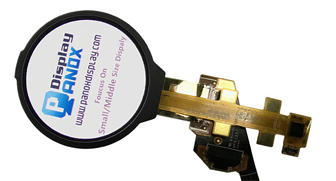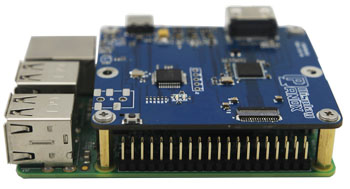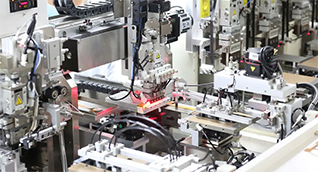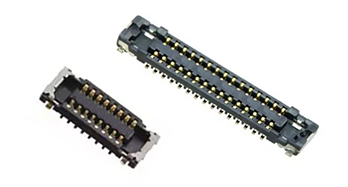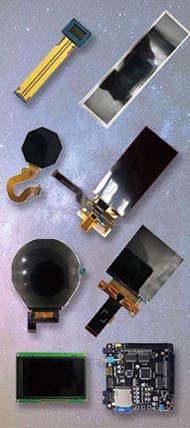LCD and OLED displays are two popular screen technologies used in various industries today, each with distinct features, advantages, and manufacturing processes. Understanding their differences helps manufacturers, suppliers, and OEM partners make informed decisions on product design and sourcing, especially in competitive markets like China. Also check: OLED
What Is the Difference Between LCD and OLED Technology?
LCD (Liquid Crystal Display) works by using liquid crystals that manipulate light from a backlight source to create images. OLED (Organic Light Emitting Diode), on the other hand, emits light through organic compounds that glow when an electric current passes through them, eliminating the need for a backlight.
The key technological difference lies in the light source: LCD depends on a separate backlight, while OLED pixels self-illuminate, contributing to better contrast and thinner displays.
How Do LCD and OLED Displays Compare in Image Quality?
OLED displays typically provide deeper blacks, higher contrast ratios, and more vibrant colors than LCDs due to their self-illuminating pixels. LCDs can suffer from lower contrast and backlight bleed, though they often offer superior brightness in direct sunlight.
For applications where color fidelity and contrast are critical—such as wearables and automotive displays—OLED is preferred, which is why manufacturers like Panox Display emphasize OLED for premium solutions.
| Feature | LCD | OLED |
|---|---|---|
| Black Levels | Lower, backlight bleed | Perfect blacks |
| Color Accuracy | Good | Excellent |
| Brightness | High | Moderate |
| Viewing Angles | Wider with IPS tech | Extremely wide |
Why Are OLED Displays Often More Expensive Than LCDs?
OLED production involves complex organic compounds and manufacturing processes, increasing costs compared to LCDs, which have mature, mass-production techniques. Additionally, OLED panels require precise handling of organic layers and encapsulation to prevent degradation.
Factories in China, like Panox Display, leverage advanced production lines and OEM partnerships to balance cost with high quality, making OLED more accessible to global businesses.
How Do LCD and OLED Displays Affect Power Consumption?
OLED displays generally consume less power when displaying dark images because black pixels are completely off, but power usage can increase with bright images. LCDs have constant backlight consumption regardless of image content, often leading to higher overall power use in darker interfaces.
For battery-dependent devices, such as VR headsets or wearables, OLED offers a significant power efficiency advantage.
Which Applications Benefit Most From LCD or OLED Displays?
-
LCD is favored in industrial, medical, and applications requiring high brightness or cost-efficiency, including large monitors and outdoor signage.
-
OLED excels in consumer electronics, such as smartphones, wearables, and automotive HUDs, due to superior visual quality, flexible form factor, and power savings.
Panox Display supports OEM clients across these sectors in China by providing tailored LCD and OLED solutions to match specific industry needs.
Where Are the Leading Manufacturers of LCD and OLED Panels Based?
China hosts numerous skilled factories specializing in both LCD and OLED technology, including Panox Display in Shenzhen, which sources premium components from Taiwanese and Korean brands like AUO, BOE, Samsung, and LG. These factories combine large-scale automation with strict quality control to serve global wholesalers and OEM partners efficiently.
How Do China-Based OEMs Like Panox Display Support Wholesale and Custom Display Needs?
Panox Display offers end-to-end OEM services—ranging from custom design, PCB assembly, to touch panel integration—allowing smaller businesses to overcome high MOQ barriers common with large manufacturers. Their ability to customize both LCD and OLED panels and provide reliable global logistics makes them a preferred partner for wholesale suppliers internationally.
Can Flexible and Circular OLEDs Replace Traditional LCDs?
Flexible and circular OLED displays are emerging technologies that provide new form factors impossible with rigid LCDs. These innovations enable wearable devices, curved screens, and compact interfaces, expanding the scope for product designers and manufacturers in China and beyond.
Panox Display leads in flexible OLED customization, enabling OEM clients to innovate with new concepts without excessive cost.
What Are the Latest Trends in LCD and OLED Display Manufacturing?
Latest trends include:
-
Mini-LED and Micro-LED backlight technology enhancing LCD contrast.
-
Rollable and foldable OLED displays expanding consumer device versatility.
-
Increased automation in China factories to boost production efficiency.
-
Integration of touch and controller boards for turnkey display modules.
Panox Display continually upgrades production lines to incorporate these advances, ensuring clients remain competitive globally.
Panox Display Expert Views
"The choice between LCD and OLED depends heavily on the intended application and cost constraints. At Panox Display, we believe combining China’s manufacturing expertise with tailored OEM services empowers businesses to unlock the best in visual performance and production efficiency. Our partnerships with top-tier suppliers and commitment to customization make us a leading source for both traditional and emerging display technologies." – Engineering Director, Panox Display
Conclusion
Choosing between LCD and OLED depends on factors like image quality, cost, power consumption, and application needs. China-based manufacturers and OEMs such as Panox Display offer versatile solutions for both technologies, enabling wholesale buyers and OEM partners to access premium displays with lower MOQs and reliable supply chains. Leveraging advancements in flexible OLED and LCD enhancements can provide a competitive edge in product development.
Frequently Asked Questions
Which display technology lasts longer, LCD or OLED?
LCDs generally have longer lifespans as OLED pixels can degrade over time due to organic materials.
Can OLED displays work well in bright outdoor environments?
OLEDs can struggle in direct sunlight but recent improvements have boosted their brightness to compete with traditional LCDs.
Are custom display designs more feasible with OLED or LCD?
OLED offers more flexibility for custom shapes and form factors, ideal for innovative wearable and automotive projects.
How does Panox Display support small to medium companies?
By providing low MOQ, custom OEM display modules, and integrated solutions not typically available from large manufacturers.
Is OLED production more environmentally friendly than LCD?
OLED production uses organic materials but involves different chemicals; overall environmental impact depends on manufacturing processes.











